Bevezetés
A biztonsági szelep az egyik legfontosabb nyomáscsökkentő eszköz az ipari rendszerekben, biztonságos működés biztosítása a túlnyomás automatikus kioldásával.
Biztonság nélkül szelepek, nagynyomású gázokkal foglalkozó iparágak, folyadékok, vagy gőz – például olaj és gáz, energiatermelés, vegyi feldolgozás, és a gyógyszerek – fokozott kockázattal szembesülnének berendezés meghibásodása, robbanások, és veszélyes szivárgások.
A biztonsági szelepek nem csupán mechanikus eszközök; azok a végső biztosíték amikor más nyomásszabályozó rendszerek meghibásodnak.
szerint a MINKET. Kémiai Biztonsági Tanács (CSB), hozzávetőlegesen 20% nyomásrendszerek ipari balesetei nem megfelelő nyomáscsökkentő mechanizmusokhoz kapcsolódnak, hangsúlyozva fontosságukat.
1. Mi az a biztonsági szelep?
A biztonsági szelep egy automatikus nyomáscsökkentő berendezés úgy tervezték, hogy kinyíljon, ha a rendszerben a nyomás meghaladja az előre meghatározott határértéket, néven ismert nyomás beállítása, és vissza kell zárni, ha a rendszer nyomása visszatér a biztonságos szintre.
Úgy működik, mint a utolsó védelmi vonal berendezések védelmére, csővezetékek, és a személyzet túlnyomásos körülményeitől, ami egyébként mechanikai meghibásodáshoz vezethet, robbanások, vagy veszélyes folyadékszivárgás.

A biztonsági szelep főbb jellemzői:
- Automatikus működés: Működéséhez nincs szükség külső tápellátásra vagy vezérlőrendszerre.
- Gyors reagálás: Gyorsan nyílik, ha a nyomás meghaladja a biztonságos határértékeket.
- Önzárás: A túlnyomás levezetése után automatikusan újra beül.
Történelmi háttér:
Az első biztonsági szelepeket a 18században a korai gőzgép korszakban megelőzésére kazán robbanások, amelyek gyakori ipari veszélyt jelentettek.
A modern dizájnok magukba foglalják rugós, pilóta által működtetett, és kiegyensúlyozott fújtató típusok, komplex ipari igények kielégítésére.
2. A biztonsági szelep működési elve
A biztonsági szelep hibamentes nyomáscsökkentő mechanizmusként működik, automatikusan kinyílik, ha a rendszerben a nyomás meghaladja az előre meghatározott értéket nyomás beállítása és zár, ha a nyomás visszatér a biztonságos szintre.
Elsődleges szerepe a nyomástartó edények katasztrofális meghibásodásának megelőzése, csővezetékek, vagy berendezést a felesleges folyadék leeresztésével (gáz, gőz, vagy folyékony) a légkörbe vagy egy biztonságos kivezető nyílásba.
A működési elvet a rendszernyomások közötti finom egyensúly szabályozza, mechanikai erők (PÉLDÁUL., rugófeszítés vagy vezérlővezérlés), és a szelepülék tömítettsége.
Kulcsfontosságú működési mechanizmusok
A biztonsági szelep működése felosztható három fázis- -bezárás, nyílás (lift), és újraültetés– mindegyiket meghatározott erőkölcsönhatások és nyomásdinamika vezérli.
- Zárt pozíció: A tömítőtárcsát rugó vagy súly tartja az üléshez, ellentétes rendszernyomás.
A záró erő (rugó/súly) úgy van kalibrálva, hogy kiegyensúlyozza a maximálisan megengedhető rendszernyomást (nyomás beállítása). - Nyílás (Pop akció): Ha a rendszer nyomása meghaladja a beállított nyomást, a tárcsára ható felfelé irányuló erő legyőzi a záróerőt, a lemez felemelése a folyadék kiürítéséhez.
Rugós terhelésű szelepekhez, ez hirtelen történik (pop) a nyomás felhalmozódásának minimalizálása érdekében. - Záró (Újraülés): Ahogy a nyomás csökken a újraültetési nyomás (beállított nyomás mínusz lefújás), a záróerő visszazárja a lemezt, a rendszer integritásának helyreállítása.
Főbb teljesítményparaméterek
- Nyomás beállítása: Az a kalibrált nyomás, amelynél a szelep felemelkedni kezd. Szerint ASMIME BPVCCCE A VIII, ez általában be van állítva 10% a MAWP felett (Maximális megengedett üzemi nyomás).
- Áramlási kapacitás: A maximális kisülési sebesség (PÉLDÁUL., kg/h gőz esetén, scfm gázhoz), a nyílás mérete és a nyomáskülönbség határozza meg. API 520 felvázolja a szükséges áramlási kapacitás számítási módszereit.
- Válaszidő: A teljes nyitáshoz szükséges idő a beállított nyomás túllépése után. Kritikus alkalmazásokban, válaszideje <0.1 másodpercig elengedhetetlenek.
- Ellennyomás Ellenállás: A szelep azon képessége, hogy megőrizze a pontosságot a lefelé irányuló nyomás ellenére. Kiegyensúlyozott fújtatós kivitelek nagy ellennyomású környezetben használják.
3. A biztonsági szelepek típusai
A biztonsági szelepeket ezek alapján osztályozzák működtető mechanizmus, tervezési jellemzők, és a tervezett alkalmazások.
Mindegyik típust úgy tervezték, hogy megfeleljen bizonyos működési feltételeknek, például nyomástartománynak, hőmérséklet, és folyadék típusa.
Rugós biztonsági szelepek
A leggyakoribb kialakítás, A rugós biztonsági szelepek összenyomott rugót használnak, hogy a szeleptárcsát az üléshez rögzítsék.
Ha a rendszer nyomása meghaladja a beállított nyomást, az erő legyőzi a rugó feszültségét, amitől a lemez felemelkedik és folyadékot enged ki.
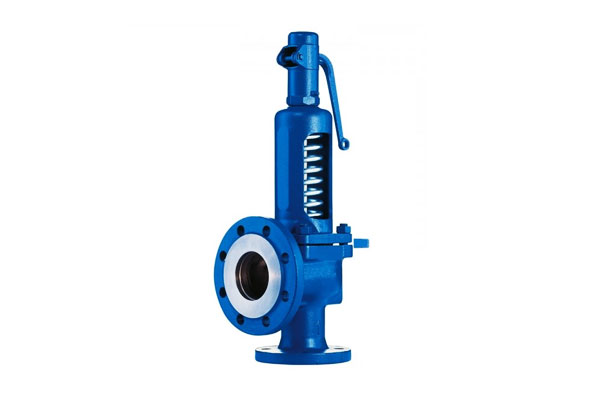
- Jellemzők & Alkalmazások:
-
- Egyszerű és kompakt kialakítás.
- Széles körben használt kazán, légkompresszorok, és feldolgozóedények.
- Nyomástartomány: 10 psi, hogy vége legyen 10,000 PSI.
- Különböző rugóval kapható, hogy megfeleljen a változó beállított nyomásoknak.
- Előnyök: Könnyen telepíthető és karbantartható, ingadozó nyomások mellett is megbízható.
Pilóta által működtetett biztonsági szelepek
Ezek a szelepek a rendszer nyomásával segítik a főszelep működését a vezérlőszelep, amely a főszelep nyitását szabályozza.
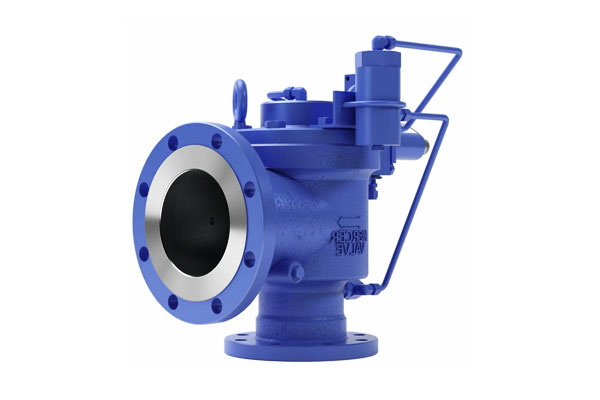
- Jellemzők & Alkalmazások:
-
- Ajánlat szoros tömítés és ideálisak az igénylő rendszerek számára magas nyomás minimális szivárgással.
- Alkalmas olaj & gázvezetékek, nagy kapacitású gőzrendszerek, és kriogén alkalmazások.
- Tudja kezelni magas ellennyomás jobbak, mint a rugós kivitelek.
- Előnyök: Precíz nyomásszabályozás, kisebb méret azonos kapacitáshoz, minimális beállított nyomáseltérés.
Termikus biztonsági szelepek
Úgy tervezték, hogy megvédje a rendszereket termikus tágulás nem pedig nagy túlnyomásos események.
Ezek a szelepek kinyílnak, ha a folyadék hőmérséklete emelkedik, miatt nyomásnövekedést okoz folyadék expanzió zárt rendszerekben.

- Jellemzők & Alkalmazások:
-
- Gyakori be melegvíz-melegítők, hűtők, és hőcserélők.
- Kisebb nyomóteljesítmény, mint a hagyományos biztonsági szelepeknél.
- Előnyök: Hatékony kis rendszerekben, ahol helyi hőnyomáscsúcsok vannak.
Kiegyensúlyozott harmonika biztonsági szelepek
Szereljen be egy harmonikaelemet a hatás ellensúlyozására ellennyomás a szeleptárcsán. Ez biztosítja a stabil teljesítményt és megakadályozza a beállított nyomás eltérését.
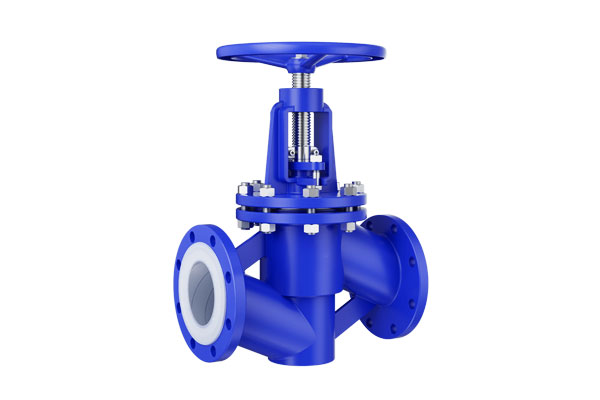
- Jellemzők & Alkalmazások:
-
- Olyan rendszerekben használatos változó vagy magas ellennyomás, mint például finomítók, vegyi növények, és nagynyomású gőzvezetékek.
- Tudja kezelni maró vagy mérgező folyadékok speciális anyagokkal, például Monel vagy Inconel kombinálva.
- Előnyök: Állandó nyitónyomás, védelem a rugón lévő korrozív lerakódások ellen.
Biztonsági nyomáscsökkentő szelepek vs. Nyomáscsökkentő szelepek
- Biztonsági szelepek: Úgy tervezték összenyomható folyadékok (PÉLDÁUL., gőz, gáz, gőz). Azok pattintsa ki teljesen beállított nyomáson.
- Lefúvató szelepek: Használt összenyomhatatlan folyadékok (PÉLDÁUL., folyadékok). Kinyílnak fokozatosan, szabályozott folyadékleadást tesz lehetővé.
- Biztonsági nyomáscsökkentő szelepek: Hibrid kivitelek, amelyek gázokhoz és folyadékokhoz egyaránt használhatók.
4. Biztonsági szelepek anyaga és felépítése
A biztonsági szelepek teljesítményét és megbízhatóságát nagymértékben befolyásolják a felépítéséhez használt anyagok.
A biztonsági szelepeknek ellenállniuk kell nagynyomású, szélsőséges hőmérsékletek, korrozív környezetek, és ismételt mechanikai igénybevétel, mindezt a precíz tömítés és reakcióképesség megőrzése mellett.
Az anyagok kiválasztása attól függ folyadéktípus (gáz, gőz, folyékony), üzemi nyomás, hőmérsékleti tartomány, és lehetséges kémiai összeférhetőség.
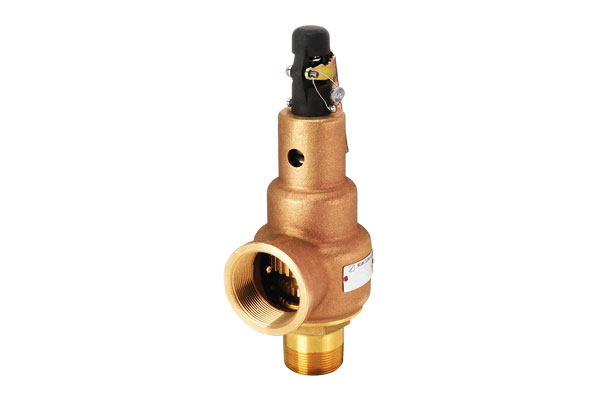
Közönséges testanyagok
Szénacél (ASTM A216 WCB, A105):
- Széles körben használják általános célú alkalmazások például gőzrendszerek és ipari csővezetékek.
- Jó szilárdság és szívósság ~425°C-ig (800° F).
- Költséghatékony, de ajánlatok mérsékelt korrózióállóság.
Rozsdamentes acél (ASTM A351 CF8M, 304/316):
- Magas ellenállás a korrózió, oxidáció, és magas hőmérséklet (600°C-ig / 1110° F).
- Előnyben részesített kémiai, petrolkémiai, és élelmiszeripar.
- 316 rozsdamentes acél, molibdénnel, kiváló ellenállást biztosít kloridok és savas környezet.
SG vas (Szferoid grafit vas / Csillapító vas):
- Egyesíti a jó mechanikai szilárdságot és ütésállóságot.
- Gyakori be közepes nyomású rendszerek, PÉLDÁUL., vízmű és HVAC.
Bronz és sárgaréz (ASTM B61, B62):
- Kiváló korrózióállóság, különösen benne tengeri vagy vízi alkalmazások.
- Általában használatos alacsony- közepes nyomású rendszerekhez és egészségügyi környezetek.
Különleges ötvözetek (Monel, Kuncol, Hastelloy, Titán):
- Használt erősen korrozív vagy szélsőséges hőmérsékleti viszonyok, mint például offshore, kriogén, vagy savfeldolgozó alkalmazások.
- A Monel nagyon ellenálló tengervíz és fluorsav.
- Az Inconel ellenáll a hőmérsékletnek 1000°C felett -ben túlhevített gőz vagy magas hőmérsékletű gázrendszerek.
Kárpit és ülés anyagok
- Fém-fém ülések (Rozsdamentes acél, Csillag):
-
- Alkalmas magas hőmérsékletű gőz vagy gáz alkalmazások.
- Sztellit bevonatok (kobalt-króm ötvözet) javít erózió és kopásállóság.
- Lágy tömítések (PTFE, EPDM, Viton):
-
- Biztosítani buborékmentes tömítés folyadékokhoz vagy alacsony nyomású gázokhoz.
- Ideális a élelmiszer-minőségű, gyógyszerészeti, és a vegyipar ahol a nulla szivárgás kritikus.
- Korlátozott alacsonyabb hőmérsékleti tartományok (<200° C).
Belső alkatrészek
- Tavaszi: Általában készült nagy szilárdságú rozsdamentes acél vagy Inconel korrózió és hőállóság érdekében.
- Lemez/csatlakozó: Edzett rozsdamentes acél vagy sztellitbevonat a tartósság érdekében az ismételt ütések során.
- Fújtató (kiegyensúlyozott szelepekhez): tól gyártva Inconel vagy rozsdamentes acél ellenáll a korróziónak és az ellennyomás hatásainak.
5. A biztonsági szelep legfontosabb szabványai és tanúsítványai
A biztonsági szelepeknek szigorú szabványoknak kell megfelelniük a megbízhatóság és a megfelelőség biztosítása érdekében:
- ASME kazán & Nyomástartó edény kódja (I. szakasz & VIII)
- API szabványok (API 520, API 526, API 527)
- Izo 4126 – Nemzetközi biztonsági szelep szabványok
- PED (Nyomástartó berendezésekről szóló irányelv, EU)
A tesztelés magában foglalja ülésfeszesség, állítsa be a nyomás ellenőrzését, áramlási kapacitás ellenőrzése, és válaszidő mérések.
6. Biztonsági szelepek alkalmazásai
A biztonsági szelepek játszanak a kritikus szerepet tölt be a berendezések védelmében, személyzet, és a környezet a túlnyomás megakadályozásával különféle ipari rendszerekben.
A túlnyomás automatikus megszüntetésének képessége biztosítja, hogy a folyamatok a biztonságos működési határokon belül maradjanak, robbanásveszély csökkentése, berendezés károsodása, vagy veszélyes szivárgások.
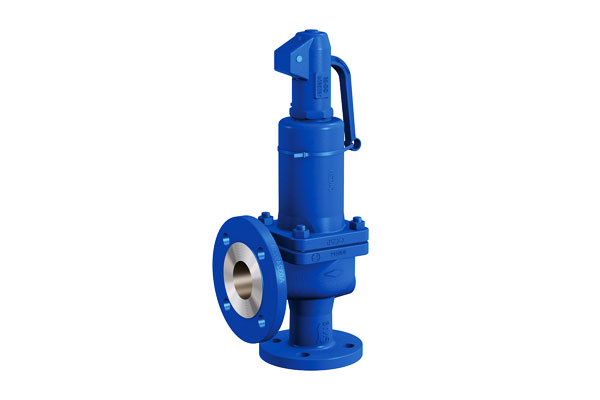
Olaj- és gázipar
- Nyomásvédelem: Biztonsági szelepek vannak felszerelve csővezeték rendszerek, elválasztók, és tárolótartályok működési rendellenességek vagy berendezések meghibásodása miatti nyomáslökések megelőzésére.
- Offshore és onshore fúrótornyok: Fúróberendezések és tenger alatti rendszerek védelmére szolgál, ahol a túlnyomás katasztrofális meghibásodásokat okozhat.
- Kriogén és LNG rendszerek: Biztonsági szelepek erre tervezve alacsony hőmérsékletű és magas nyomású környezetben biztosítsa a cseppfolyósított gázok biztonságos kezelését.
Energiatermelés
- Gőzkazánok és turbinák: A biztonsági szelepek kritikusak hőerőművek, a kazán robbanásának megakadályozása és a turbinák túlzott gőznyomás elleni védelme.
- Megújuló energia: -Ben napenergia, biztonsági szelepek védik a hőhordozó rendszereket a túlmelegedéstől és a túlnyomástól.
Vegyi és petrolkémiai ipar
- Reaktorok és nyomástartó edények: Biztonsági szelepek védik a vegyi reaktorokat és a desztillációs oszlopokat elszabadult reakciók vagy váratlan nyomásnövekedés.
- Veszélyes folyadékok: Korrózióálló anyagokból készült szelepek (PÉLDÁUL., Monel, Hastelloy) -ra használják agresszív vagy mérgező vegyszerek.
- Folyamat vonalak: A tehermentesítő rendszerek biztosítják a biztonságot hirtelen áramlási hullámok vagy dugulások esetén.
Élelmiszer- és gyógyszeripar
- Egészségügyi alkalmazások:Higiénikus biztonsági szelepek nélkülözhetetlenek az étel- és italfelszereléshez, az FDA és az EHEDG szabványoknak való megfelelés biztosítása.
- Steril környezetek: A gyógyszergyártás biztonsági szelepei a termék sterilitásának veszélyeztetése nélkül tartják fenn a nyomásszabályozást.
- Alacsony nyomású védelem: Feldolgozó sorokban használják sűrített levegő, CO₂, vagy pasztőröző rendszerek.
HVAC és vízrendszerek
- Fűtési kazánok: A biztonsági szelepek megakadályozzák kazánrobbanások vagy túlnyomásos események kereskedelmi és lakossági HVAC rendszerekben.
- Sűrített levegő rendszerek: Védje a levegővevőket és kompresszorokat a szabályozó meghibásodása miatti nyomásnövekedéstől.
- Városi Vízművek: ben jelentkezett szivattyúállomások, vízmelegítők, és sótalanító üzemek túlfeszültség elleni védelem érdekében.
Tengeri és tengeri alkalmazások
- Hajó kazánok és motorok: A biztonsági szelepek elengedhetetlenek tengeri meghajtó rendszerek és üzemanyag-vezetékek az IMO biztonsági előírásainak való megfelelés biztosítása érdekében.
- Offshore platformok: Védi az olyan berendezéseket, mint a kompresszorok, elválasztók, és gázfáklyás rendszerek.
Energetikai és ipari gépek
- Szélturbinák: A szélturbinák hidraulikus rendszerei biztonsági szelepeket használnak a karbantartáshoz biztonságos üzemi nyomás.
- Nagy teherbírású berendezések: Biztonsági szelepeket használnak hidraulikus prések, kompresszorok, és szivattyúk túlnyomásból eredő szerkezeti károsodások megelőzésére.
7. A biztonsági szelepek előnyei
A biztonsági szelepek egyedülálló képességeik és előnyeik miatt nélkülözhetetlenek az ipari rendszerekben.
- Automatikus és megbízható nyomáscsökkentés
A biztonsági szelepek önállóan működnek, külső áramellátás vagy kézi beavatkozás nélkül.
Azonnal reagálnak a túlnyomásos állapotokra, a berendezések és a személyzet gyors védelmének biztosítása. - Fail-Safe Design
Utolsó védelmi vonalként tervezték, a biztonsági szelepek alapértelmezés szerint nyitott helyzetbe kerülnek, ha a rendszer nyomása meghaladja a beállított határértéket, katasztrofális meghibásodások vagy robbanások megelőzése. - Sokoldalúság az iparágakban
Különféle kivitelben és anyagokban kapható, a biztonsági szelepek testreszabhatók a különböző közegekhez (gáz, gőz, folyadékok), hőmérséklet, nyomás, és korrozív környezetekben,
alkalmassá téve azokat az olyan ágazatokban, mint az olaj és a gáz, energiatermelés, vegyi feldolgozás, gyógyszerkészítmények, és még sok. - Nagy áramlási kapacitás és pontos nyomásszabályozás
Nagy mennyiségű folyadék gyors kezelésére tervezték, a biztonsági szelepek biztonságos határokon belül tartják a rendszernyomást, a működési állásidő és a berendezés károsodásának minimalizálása. - Tartósság és hosszú élettartam
Robusztus anyagokból készült, és ismétlődő kerékpározáshoz tervezték, A biztonsági szelepek hosszú ideig megőrzik teljesítményüket zord üzemi körülmények között is. - Könnyű karbantartás és tesztelés
Számos biztonsági szelep tesztelhető és kalibrálható a helyszínen, csökkenti a karbantartási költségeket és lehetővé teszi az ütemezett megelőző karbantartást a folyamatos biztonság érdekében. - Költséghatékonyság
A berendezés károsodásának és a túlnyomásos események miatti költséges leállások megelőzésével, A biztonsági szelepek jelentős megtakarításokhoz járulnak hozzá az ipari rendszerek életciklusa során.
8. Biztonsági szelep méretezése és kiválasztása
A megfelelő biztonsági szelep kiválasztása és méretezése kulcsfontosságú lépés az ipari rendszerek hatékony túlnyomásvédelmének biztosításához.
A nem megfelelő méretű szelep vagy nem tudja megfelelően csökkenteni a nyomást, vagy szükségtelen termékvesztést és üzemszünetet okozhat.
A folyamat magában foglalja a rendszerparaméterek alapos mérlegelését, folyadék jellemzői, és szabályozási szabványok.
A biztonsági szelep méretét befolyásoló kulcstényezők
- Nyomás beállítása
A szelep nyitási nyomása, vagy állítsa be a nyomást, a rendszer megengedett legnagyobb üzemi nyomása alapján kell kiválasztani (MAWP).
Jellemzően, a beállított nyomás a MAWP-re vagy valamivel magasabbra van állítva, annak biztosítása, hogy a szelep csak akkor aktiválódjon, ha az szükséges a sérülések elkerülése érdekében. - Tehermentesítő kapacitás (Áramlási sebesség)
A szelepnek képesnek kell lennie elegendő folyadék kiürítésére ahhoz, hogy túlnyomás esetén biztonságosan és gyorsan csökkentse a rendszernyomást.
Ez a kapacitás a tehermentesítési körülmények között várható maximális áramlási sebességtől függ, amelyet a folyadék típusa befolyásolhat (gáz, gőz, vagy folyékony), a hőmérséklete, és nyomás. - Folyadék tulajdonságai
Olyan jellemzők, mint a fázis (folyékony, gáz, vagy gőz), sűrűség, viszkozitás, hőmérséklet, és a korrozivitás befolyásolja a szelep kialakítását és méretét.
Például, a gőz az összenyomhatóság miatt más áramlási számításokat igényel, mint a folyadékok. - Ellennyomás
A szelep kimenete utáni nyomás befolyásolja a szelep teljesítményét.
Egyes szelepeket úgy tervezték, hogy kompenzálják az ellennyomást (kiegyensúlyozott fújtató kialakítás), míg mások a méretezés vagy a kiválasztás módosítását igényelhetik. - Rendszerkonfiguráció és biztonsági határok
A megfontolások közé tartoznak a túlnyomást okozó lehetséges forgatókönyvek (termikus tágulás, blokkolt kisülés, tűznek való kitettség), és biztonsági ráhagyást adnak a szelep kapacitásához a bizonytalanságok kezelésére.
Méretezési módszerek és szabványok
A biztonsági szelepek méretezése szabványosított módszereket követ, amelyeket az ipari szabályzatok határoznak meg, mint pl:
- API 520 / API 521
Részletes képleteket és eljárásokat ad a gázbiztonsági szelepek méretezéséhez, gőz, és folyékony szolgáltatás, folyadéktulajdonságokat tartalmaz, kibocsátási feltételek, és a szelep jellemzői. - ASME kazán és nyomástartó edény kódja (BPVC), Látva VIII
Útmutatást nyújt a nyomástartó edények tehermentesítő berendezéseihez, a megengedett beállított nyomások megadása, túlnyomási engedmények, és méretezési módszerek. - Izo 4126
Nemzetközi szabvány a túlnyomás elleni védelemre szolgáló biztonsági berendezésekre.
Szelepválasztási szempontok
- Szeleptípus és szervizkompatibilitás
Válassza ki a folyadékfázisnak és a működési környezetnek megfelelő szeleptípusokat (PÉLDÁUL., pilot által működtetett szelepek a nagy kapacitás érdekében, rugós az egyszerűség kedvéért). - Anyagi kompatibilitás
Illessze a szelepszerkezeti anyagokat a folyadék kémiájához és hőmérsékletéhez. - Üzemeltetési feltételek
Vegye figyelembe a szélsőséges hőmérsékleteket, kerékpározás gyakorisága, és lehetséges ellennyomás. - Tanúsítás és megfelelőség
Győződjön meg arról, hogy a szelep megfelel az összes vonatkozó iparági előírásnak és az ügyfél specifikációinak.
9. A biztonsági szelepek gyakori meghibásodásai és karbantartása
A biztonsági szelep kritikus szerepet játszik az ipari biztonságban, de hatékonyságuk a megfelelő karbantartástól és az esetleges hibák időben történő felismerésétől függ.
A biztonsági szelepek gyakori hibái
- Korrózió és anyagromlás
Erős vegyi anyagoknak való kitettség, nedvesség, és a magas hőmérséklet a szelepelemek, például a szelepülék korrózióját vagy erózióját okozhatja, lemez, rugó, és test.
Ez szivárgáshoz vezet, nem megfelelő tömítés, és a szelep integritásának elvesztése. - Szelep beragadás vagy beszorulás
Szennylerakódások, skála, vagy idegen részecskék halmozódhatnak fel a szelepülékben vagy a mozgó alkatrészekben, amitől a szelep nyitott vagy zárt helyzetben megtapad.
Ez túlnyomás vagy folyamatos szivárgás esetén a nyitás meghibásodását eredményezheti. - Nem megfelelő kalibrálás és nyomáseltolódás beállítása
Idővel, rugófáradás vagy mechanikai kopás megváltoztathatja a beállított nyomást, ami a szelep nyitását okozza nem megfelelő nyomáson.
Ez aláássa a biztonsági funkciót a túl korai nyitás miatt (szükségtelen elengedéseket okozva) vagy túl későn (a berendezés károsodásának kockázatával). - Ülés és tömítés sérülése
Az ismételt nyitási és zárási ciklusok elhasználhatják a szelepüléket és a tömítéseket, veszélyezteti a szelep azon képességét, hogy szoros tömítést képezzen, és szivárgáshoz vezet. - Ellennyomás hatások
A nyomóvezeték túlzott vagy ingadozó ellennyomása befolyásolhatja a szelep működését, potenciálisan idő előtti nyitást vagy a megfelelő visszahelyezés hibáját okozhatja. - Mechanikai hibák
Törött rugók, hajlított korongok, vagy a mechanikai fáradtság vagy helytelen kezelés által okozott sérült szárak működésképtelenné tehetik a szelepet.
Karbantartási gyakorlatok a biztonsági szelepekhez
- Rendszeres ellenőrzés és tesztelés
Időszakos teljesítményvizsgálat (PÉLDÁUL., pop tesztelés) el kell végezni a beállított nyomás ellenőrzésére, újraültetés, és áramlási kapacitás.
Sok szabvány a működési kritikusságon alapuló tesztelési intervallumokat javasol, jellemzően évente vagy kétévente. - Tisztítás és törmelék eltávolítás
A belső alkatrészek tisztítása, valamint a szelepülék és a tárcsa lerakódásmentességének biztosítása segít megelőzni a ragadást és a szivárgást. - Rugó és tömítés csere
A rugókat meg kell vizsgálni korrózió vagy feszültségvesztés szempontjából, és szükség esetén cserélni kell.
A tömítések és az ülések rendszeres ellenőrzést és felújítást vagy cserét igényelnek a tömítettség megőrzése érdekében. - Kalibrálás beállítása
A szelep újrakalibrálása a megfelelő beállított nyomásra biztosítja a pontos működést és a rendszer biztonsági követelményeinek való megfelelést. - Mozgó alkatrészek kenése
A megfelelő kenés csökkenti a szelepmechanizmusok kopását és súrlódását, növeli a reakcióképességet és a hosszú élettartamot. - Dokumentáció és nyilvántartás
Az ellenőrzésekről részletes nyilvántartás vezetése, tesztelés, javítás, és a cserék elengedhetetlenek a szabályozási megfeleléshez és az előrejelző karbantartáshoz.
10. Összehasonlítás más szelepekkel
A biztonsági szelepek speciális berendezések, amelyeket kifejezetten a túlnyomás elleni védelemre terveztek, de bizonyos funkcionális hasonlóságokat mutatnak más szeleptípusokkal, például a biztonsági szelepekkel, szabályozó szelepek, és elzárószelepek.
E különbségek megértése segít tisztázni egyedi szerepüket az ipari rendszerekben.
| Jellemző | Biztonsági szelep | Lefúvató szelep | Biztonsági nyomáscsökkentő szelep | Vezérlő szelep |
| Elsődleges funkció | Gyors, teljes nyitás a vészhelyzeti nyomáscsökkentéshez | Fokozatos nyomáscsökkentés, főleg folyadékokhoz | Vészhelyzeti segélynyújtás gázokhoz és folyadékokhoz | Szabályozza az áramlást, nyomás, vagy hőmérséklet |
| Üzemmód | Gyorsan nyílik a beállított nyomáson (pop akció) | A nyomás emelkedésével arányosan nyílik | Rendszertől függően teljesen vagy fokozatosan nyílik | Folyamatosan modulál normál működés közben |
| Tipikus folyadék | Gázok, gőz | Folyadékok | Gázok és folyadékok | Gázok és folyadékok |
| Áramlási kapacitás | Magas, vészhelyzet idején korlátlan | Mérsékelt, szabályozott áramlás | Magas vagy szabályozott kiviteltől függően | Ellenőrzött, pontos áramlás |
| Lefújás | Meghatározott lefúvás a szelepreccsenés megakadályozására | Minimális vagy állítható | Változó lefúvatás | Nem alkalmazható |
| Hibabiztos szerepkör | Kritikus biztonsági berendezés, nem sikerül kinyitni | Nem elsősorban hibabiztos eszköz | Folyadékok és gázok biztonsági berendezéseként működik | Nem vészhelyzeti biztonságra tervezték |
| Tipikus alkalmazások | Gőzkazánok, gázvezetékek | Hidraulikus rendszerek, folyékony csővezetékek | Vegyi feldolgozás, olaj & gázfolyadék rendszerek | Folyamatszabályozás minden iparágban |
| Tervezési szabványok | ASME I. szakasz & VIII, API 526 | API 520, API 526 | ASME, API | ISA, IEC, API |
11. Következtetés
Biztonsági szelepek vannak kritikus komponensek az ipari rendszerek biztonságos és megbízható működésének biztosítására.
A túlnyomás automatikus megakadályozásával, védik a berendezéseket, személyzet, és a környezet.
A fejlődő ipari igényekkel – mint pl magasabb üzemi nyomások, automatizálás, és szigorúbb biztonsági előírásokat– a biztonsági szelepek tervezése és karbantartása továbbra is a modern mérnöki munka sarokköve marad.
EZ: Nagy pontosságú szelepöntési megoldások igényes alkalmazásokhoz
EZ a precíziós szelepöntési szolgáltatások szakosodott szolgáltatója, nagy teljesítményű alkatrészek szállítása a megbízhatóságot igénylő iparágak számára, nyomás integritása, és méretpontosság.
A nyers öntvényektől a teljesen megmunkált szeleptestekig és szerelvényekig, EZ végpontok közötti megoldásokat kínál, amelyeket úgy terveztek, hogy megfeleljenek a szigorú globális szabványoknak.
Szelepöntési szakértelmünk magában foglalja:
Befektetési casting a szeleptestekhez & Vágás
Az elveszett viaszöntési technológia felhasználásával összetett belső geometriák és szűk tűrésű szelepalkatrészek készíthetők kivételes felületi minőséggel.
Homoköntés & Héjas penészöntés
Ideális közepes és nagy szeleptestekhez, karimák, és motorháztetők – költséghatékony megoldást kínálnak a robusztus ipari alkalmazásokhoz, beleértve az olajat is & gáz- és áramtermelés.
Precíziós megmunkálás a szelephez & Pecsét integritása
Ülések CNC megmunkálása, szálak, és a tömítőfelületek biztosítják, hogy minden öntött alkatrész megfeleljen a méretre és a tömítési teljesítményre vonatkozó követelményeknek.
Anyagválaszték kritikus alkalmazásokhoz
Rozsdamentes acélból (CF8/CF8M/CF3/CF3M), sárgaréz, csillapító vas, duplex és erősen ötvözött anyagokhoz, EZ korrozív hatású szelepöntvényeket szállít, nagynyomású, vagy magas hőmérsékletű környezetben.
Akár egyedi pillangószelepekre van szüksége, biztonsági szelep, gömbszelepek, tolózárak, vagy ipari szelepöntvények nagy volumenű gyártása, EZ az Ön megbízható partnere a pontosság érdekében, tartósság, és minőségbiztosítás.
GYIK
Mi okozza a biztonsági szelep remegését?
Csevegés (gyors nyitás/zárás) alulméretezés okozza, túlzott ellennyomás, vagy bemeneti nyomásesés. Ez károsíthatja a szelepet és a rendszert, átméretezést vagy telepítési beállítást igényel.
Hogyan hat az ellennyomás a biztonsági szelepre?
A kiegyensúlyozatlan szelepeknél beállított nyomáseltolódás tapasztalható (±1% per 10% ellennyomás). Kiegyensúlyozott szelepek (fújtatóval) ezt ellensúlyozni, a pontosság megőrzése.
Mi a különbség a biztonsági szelep és a szakítótárcsa között??
A biztonsági szelepek újrafelhasználhatók és állíthatók, míg a töréskorongok egyszer használatosak (tört a PS-nél) és kezelni a nagyobb nyomást. Gyakran együtt használják őket a kritikus rendszerek redundanciájára.



